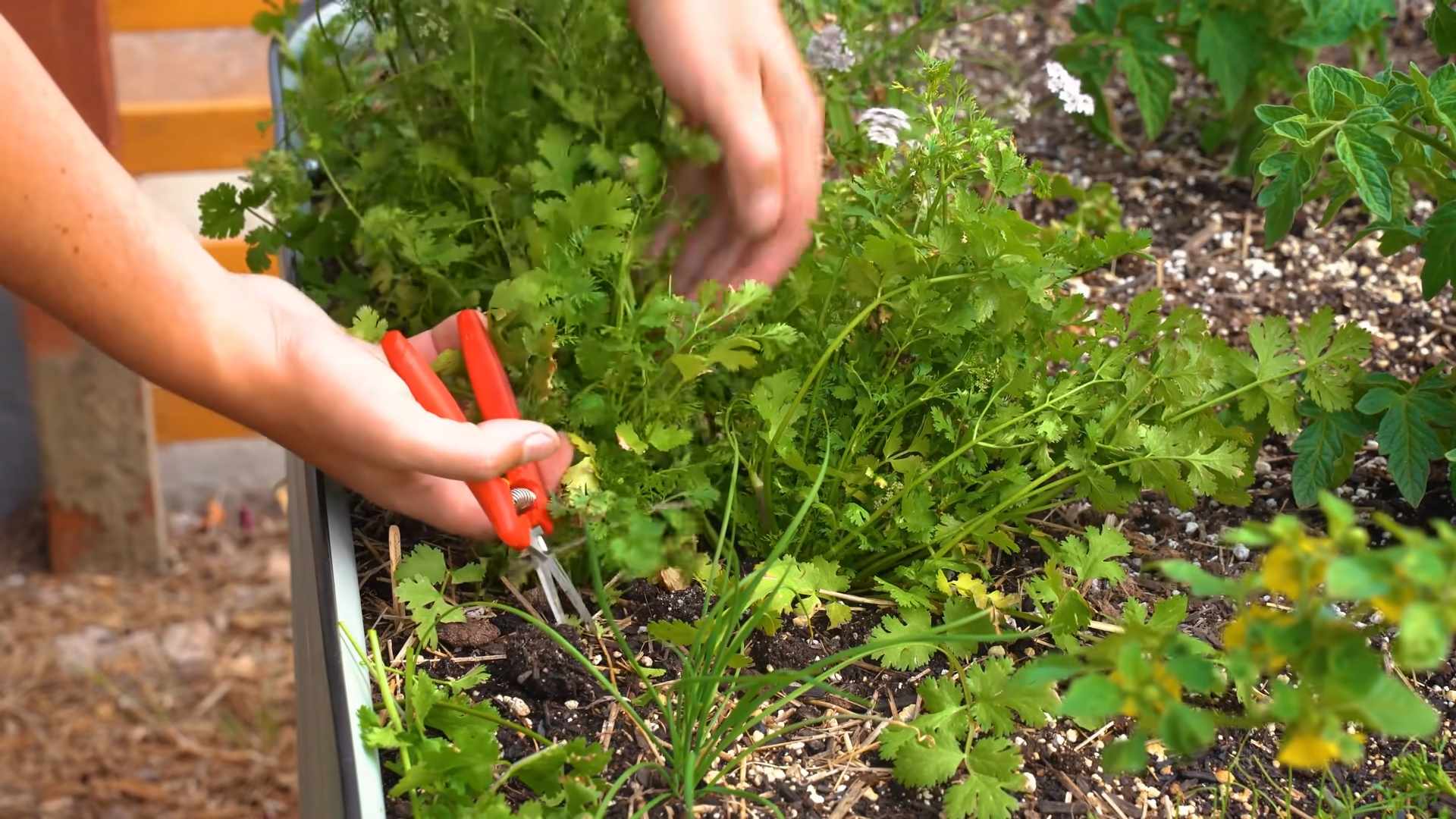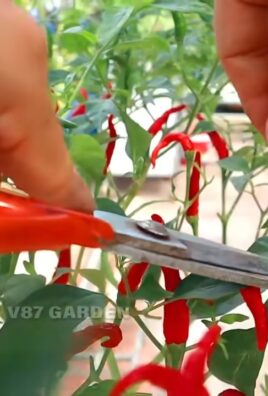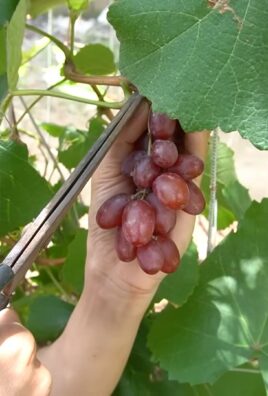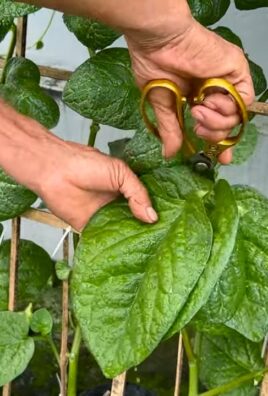Stop Cilantro Bolting! Are you tired of your cilantro turning bitter and going to seed before you can even harvest a decent bunch? I know I was! There’s nothing more frustrating than watching your precious herbs transform from a vibrant green to a spindly, flowering mess. But don’t despair, fellow gardeners! This DIY guide is packed with simple, effective tricks to keep your cilantro happy, healthy, and producing those delicious leaves we all crave.
Cilantro, also known as coriander, has a rich history, dating back thousands of years. Evidence suggests it was used in ancient Egypt and even found in the tomb of Tutankhamun! Throughout history, it’s been valued not only for its culinary uses but also for its medicinal properties. But even the most historically significant herb can be a pain to grow if it bolts prematurely.
So, why is it so important to stop cilantro bolting? Well, bolting dramatically changes the flavor of the leaves, making them bitter and almost unusable. Plus, once your cilantro bolts, it focuses its energy on producing seeds rather than foliage, significantly reducing your harvest. In this article, I’ll share my tried-and-true methods to prevent bolting, ensuring you have a continuous supply of fresh, flavorful cilantro all season long. Let’s get started and unlock the secrets to a thriving cilantro patch!

How to Keep Your Cilantro From Bolting: A DIY Guide
Hey there, fellow gardeners! Are you tired of your cilantro turning bitter and going to seed before you can even harvest a decent amount? Bolting, that frustrating phenomenon where your cilantro shoots up a flower stalk, is a common problem, especially in warmer weather. But don’t despair! I’ve battled this myself, and I’m here to share my tried-and-true methods for keeping your cilantro happy, leafy, and delicious for longer.
Understanding Why Cilantro Bolts
Before we dive into the how-to, let’s quickly understand why cilantro bolts in the first place. It’s all about stress! Cilantro is a cool-season herb, and it’s sensitive to:
* High Temperatures: Heat is the biggest culprit. When the weather warms up, cilantro thinks its time to reproduce, so it sends up a flower stalk to produce seeds.
* Long Days: Longer daylight hours also signal to the plant that summer is coming, triggering bolting.
* Water Stress: Inconsistent watering can stress the plant and cause it to bolt prematurely.
* Nutrient Deficiency: A lack of essential nutrients can weaken the plant, making it more susceptible to bolting.
Knowing these factors helps us tailor our approach to prevent bolting.
Choosing the Right Cilantro Variety
Believe it or not, some cilantro varieties are more bolt-resistant than others. When selecting seeds, look for varieties specifically bred for slower bolting. Some popular choices include:
* Slow Bolt: As the name suggests, this variety is known for its resistance to bolting.
* Santo: Another reliable option that holds up well in warmer conditions.
* Calypso: A heat-tolerant variety that’s a good choice for warmer climates.
Choosing the right variety is the first step in winning the battle against bolting!
Planting for Success
Timing is everything when it comes to cilantro. Here’s how to plant to minimize bolting:
* Planting Time:
* Spring Planting: Plant cilantro in early spring, as soon as the soil is workable. This gives it a chance to establish itself before the heat of summer arrives.
* Fall Planting: In many regions, fall is an even better time to plant cilantro. The cooler temperatures and shorter days are ideal for growth. Plant about 6-8 weeks before the first expected frost.
* Location:
* Partial Shade: Cilantro prefers partial shade, especially during the hottest part of the day. If you’re planting in a sunny location, try to provide some afternoon shade.
* Well-Drained Soil: Cilantro needs well-drained soil to prevent root rot. Amend heavy clay soil with compost or other organic matter to improve drainage.
* Sowing Seeds:
* Direct Sowing: Cilantro is best direct-sown, as it doesn’t transplant well. Sow seeds about 1/4 inch deep and 1 inch apart.
* Succession Planting: Plant a new batch of seeds every 2-3 weeks to ensure a continuous supply of cilantro throughout the growing season. This is crucial because even with the best efforts, cilantro will eventually bolt.
Watering and Feeding Your Cilantro
Consistent watering and proper fertilization are essential for healthy cilantro growth and preventing bolting.
* Watering:
* Keep the Soil Moist: Cilantro needs consistent moisture, but avoid overwatering, which can lead to root rot. Water deeply whenever the top inch of soil feels dry.
* Water in the Morning: Water in the morning to allow the foliage to dry before nightfall, reducing the risk of fungal diseases.
* Fertilizing:
* Balanced Fertilizer: Feed your cilantro with a balanced fertilizer (e.g., 10-10-10) every 2-3 weeks.
* Liquid Fertilizer: Alternatively, you can use a liquid fertilizer diluted to half strength. This is a gentler option that’s less likely to burn the roots.
* Organic Options: Compost tea or fish emulsion are excellent organic options for feeding cilantro.
Protecting Cilantro from Heat
Heat is the biggest enemy of cilantro. Here are some ways to protect your plants from the scorching sun:
* Shade Cloth: Use shade cloth to provide partial shade during the hottest part of the day. This is especially important in warmer climates.
* Strategic Planting: Plant cilantro near taller plants that will provide some natural shade.
* Mulching: Apply a layer of mulch around the base of the plants to help retain moisture and keep the soil cool. Straw, wood chips, or shredded leaves are all good options.
* Container Gardening: If you’re growing cilantro in containers, you can easily move them to a shadier location when the weather gets hot.
Harvesting Cilantro Properly
How you harvest your cilantro can also affect its bolting tendencies.
* Regular Harvesting: Harvest cilantro regularly by snipping off the outer leaves. This encourages the plant to produce more leaves and delays bolting.
* Avoid Over-Harvesting: Don’t remove more than one-third of the plant at a time, as this can stress it and trigger bolting.
* Pinch Off Flower Buds: As soon as you see any flower buds forming, pinch them off immediately. This will redirect the plant’s energy back into producing leaves.
Step-by-Step Guide to Preventing Cilantro Bolting
Okay, let’s put it all together into a step-by-step guide:
1. Choose the Right Variety: Select a bolt-resistant cilantro variety like ‘Slow Bolt,’ ‘Santo,’ or ‘Calypso.’
2. Time Your Planting: Plant cilantro in early spring or fall for best results.
3. Prepare the Soil: Choose a location with well-drained soil and amend with compost or other organic matter.
4. Sow the Seeds: Direct sow seeds about 1/4 inch deep and 1 inch apart.
5. Water Consistently: Keep the soil consistently moist, but avoid overwatering.
6. Fertilize Regularly: Feed your cilantro with a balanced fertilizer every 2-3 weeks.
7. Provide Shade: Protect your plants from the hot afternoon sun with shade cloth or strategic planting.
8. Mulch the Soil: Apply a layer of mulch to help retain moisture and keep the soil cool.
9. Harvest Regularly: Snip off the outer leaves regularly to encourage new growth.
10. Pinch Off Flower Buds: As soon as you see any flower buds forming, pinch them off immediately.
11. Succession Plant: Plant a new batch of seeds every 2-3 weeks to ensure a continuous supply of cilantro.
Dealing with Bolted Cilantro
Even with the best efforts, cilantro will eventually bolt. But don’t throw it away! Here’s what you can do:
* Harvest the Seeds: Allow the plant to flower and produce seeds. Cilantro seeds are coriander, a delicious spice used in many cuisines.
* Let it Self-Seed: Allow the plant to self-seed. Cilantro is a prolific self-seeder, so you’ll likely have new plants popping up in the fall.
* Compost the Plant: If you don’t want the plant to self-seed, compost it.
Troubleshooting Common Problems
* Yellowing Leaves: This could be a sign of overwatering, nutrient deficiency, or fungal disease. Adjust your watering schedule, fertilize the plant, and treat any fungal diseases with an appropriate fungicide.
* Slow Growth: This could be due to poor soil, lack of sunlight, or cold temperatures. Amend the soil, move the plant to a sunnier location, or provide protection from the cold.
* Pests: Cilantro is generally pest-resistant, but aphids and spider mites can sometimes be a problem. Treat infestations with insecticidal soap or neem oil.
Extra Tips and Tricks
* Grow Cilantro Indoors: If you live in a hot climate, consider growing cilantro indoors under grow lights. This will give you more control over the temperature and light levels.
* Soak Seeds Before Planting: Soaking cilantro seeds in water for 24 hours before planting can improve germination rates.
* Use a Soil Thermometer: Use a soil thermometer to monitor the soil temperature. Cilantro prefers soil temperatures between 50°F and 85°F.
By following these tips and tricks, you can significantly extend the life of your cilantro and enjoy fresh, flavorful leaves for longer. Happy gardening!

Conclusion
So, there you have it! Mastering the art of preventing cilantro bolting is not just about extending the life of your favorite herb; it’s about unlocking a continuous supply of fresh, flavorful goodness right from your own garden or windowsill. We’ve explored the key factors that contribute to bolting – heat stress, insufficient watering, and overcrowding – and armed you with practical, actionable strategies to combat them.
Why is this DIY trick a must-try? Because store-bought cilantro, while convenient, simply can’t compare to the vibrant taste and aroma of freshly harvested, homegrown cilantro. Plus, by preventing bolting, you’re not just getting more cilantro; you’re also saving money and reducing food waste. Think of all the delicious salsas, guacamole, tacos, and Asian-inspired dishes you can elevate with your own supply of this versatile herb.
But the benefits extend beyond the culinary realm. Gardening, even on a small scale, is a therapeutic and rewarding activity. Nurturing your cilantro plants and witnessing their growth is a simple pleasure that can bring joy and a sense of accomplishment. And let’s not forget the satisfaction of knowing exactly where your food comes from and that it’s free from harmful pesticides and chemicals.
Now, let’s talk about variations and suggestions. While the core principles of preventing bolting remain the same, you can adapt these techniques to suit your specific environment and growing conditions.
* Shade Cloth Experimentation: Try different densities of shade cloth to find the optimal balance between sunlight and protection from excessive heat.
* Companion Planting: Consider planting cilantro alongside taller plants that can provide natural shade, such as tomatoes or peppers.
* Succession Planting: Sow new cilantro seeds every few weeks to ensure a continuous harvest, even if some plants bolt prematurely.
* Container Gardening Adjustments: If growing in containers, choose larger pots to provide more room for root growth and better moisture retention. Dark-colored containers absorb more heat, so opt for lighter colors or wrap them in reflective material.
* Bolted Cilantro Uses: Even if your cilantro does bolt, don’t despair! The flowers are edible and attract beneficial insects to your garden. The seeds, known as coriander, can be harvested and used as a spice.
We’ve covered a lot of ground, but the most important thing is to get started! Don’t be afraid to experiment and find what works best for you. Remember, gardening is a learning process, and even experienced gardeners encounter challenges. The key is to be observant, adapt your strategies, and never give up.
We are confident that with these tips, you’ll be well on your way to enjoying a bountiful harvest of fresh, flavorful cilantro for months to come. So, grab your seeds, prepare your soil, and get ready to experience the joy of growing your own cilantro.
We encourage you to try these DIY tricks and share your experiences with us! Let us know what works best for you, any challenges you encounter, and any creative solutions you come up with. Share your photos and stories on social media using #StopCilantroBolting and let’s build a community of cilantro enthusiasts! We can’t wait to hear from you and learn from your experiences. Happy gardening!
Frequently Asked Questions (FAQ)
Why is my cilantro bolting so quickly?
Cilantro is a cool-season herb that is highly susceptible to bolting, which is premature flowering. The primary culprits are heat stress, insufficient watering, and overcrowding. When cilantro experiences prolonged periods of high temperatures, especially above 75°F (24°C), it triggers its reproductive cycle, causing it to bolt. Inadequate watering can also stress the plant, leading to bolting. Finally, if your cilantro plants are too close together, they will compete for resources, weakening them and making them more prone to bolting.
How can I tell if my cilantro is about to bolt?
There are several telltale signs that your cilantro is preparing to bolt. The most obvious is the appearance of flower stalks emerging from the center of the plant. You may also notice that the leaves become smaller, more feathery, and less flavorful. The stem will also elongate and become thicker. The overall growth rate of the plant may also slow down. Keep a close eye on your plants, especially during hot weather, and take action as soon as you notice these signs.
What is the best way to water cilantro to prevent bolting?
Consistent and adequate watering is crucial for preventing cilantro bolting. Cilantro prefers moist, but not waterlogged, soil. Water deeply and regularly, especially during hot and dry periods. Aim to keep the soil consistently moist to a depth of at least 1 inch. Avoid overhead watering, as this can promote fungal diseases. Instead, water at the base of the plant or use a soaker hose. Mulching around the plants can also help to retain moisture in the soil.
Does shade cloth really help prevent cilantro from bolting?
Yes, shade cloth can be a very effective tool for preventing cilantro bolting, especially in hot climates. Shade cloth reduces the amount of direct sunlight that reaches the plants, which helps to lower the temperature and prevent heat stress. Choose a shade cloth with a density of 30-50% for optimal results. This will provide sufficient shade without depriving the plants of essential sunlight. Be sure to monitor the plants closely and adjust the shade cloth as needed based on the weather conditions.
Can I still eat cilantro after it has bolted?
While the flavor of cilantro leaves diminishes after bolting, they are still edible. However, they will be more bitter and less flavorful than before. The flowers are also edible and have a mild cilantro flavor. You can use them as a garnish or add them to salads. The seeds, known as coriander, are a valuable spice that can be harvested and used in a variety of dishes. So, even if your cilantro bolts, you can still salvage some value from the plant.
How often should I fertilize my cilantro plants?
Cilantro is not a heavy feeder, so it doesn’t require frequent fertilization. However, a light feeding every few weeks can help to promote healthy growth and prevent bolting. Use a balanced, water-soluble fertilizer diluted to half strength. Avoid over-fertilizing, as this can lead to excessive vegetative growth at the expense of flavor. You can also amend the soil with compost or other organic matter to provide a slow-release source of nutrients.
Is it better to grow cilantro in the ground or in containers?
Cilantro can be grown successfully both in the ground and in containers. The best option depends on your specific circumstances and preferences. Growing cilantro in the ground allows for more root space and better access to nutrients and water. However, container gardening offers more flexibility and control over the growing environment. You can easily move containers to provide shade or protection from frost. If growing in containers, choose a pot that is at least 6 inches deep and wide and use a well-draining potting mix.
What are some good companion plants for cilantro?
Companion planting can be a beneficial strategy for growing cilantro. Some good companion plants for cilantro include carrots, onions, garlic, and tomatoes. Carrots help to loosen the soil, making it easier for cilantro roots to grow. Onions and garlic repel pests that can damage cilantro plants. Tomatoes provide shade, which can help to prevent bolting. Avoid planting cilantro near fennel, as it can inhibit its growth.
How do I harvest cilantro to encourage continued growth?
Harvesting cilantro properly can encourage continued growth and prevent bolting. Instead of cutting off the entire plant at once, harvest individual leaves or stems as needed. Cut the stems just above a leaf node, which will encourage new growth from that point. Avoid harvesting more than one-third of the plant at a time, as this can stress it and make it more prone to bolting. Regular harvesting will also help to keep the plant compact and prevent it from becoming leggy.
Can I save seeds from my bolted cilantro plants?
Yes, you can save seeds from your bolted cilantro plants. Allow the flowers to dry on the plant and then harvest the seed pods. Place the seed pods in a paper bag and allow them to dry completely. Once the seed pods are dry, crush them to release the seeds. Store the seeds in an airtight container in a cool, dark, and dry place. Cilantro seeds can remain viable for several years if stored properly.





Leave a Comment